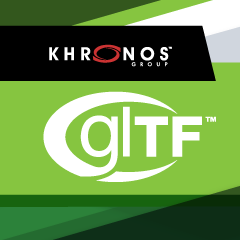glTF has evolved beyond its origins as a standalone 3D format. It is now adopted as an ISO international standard and has become central to a rapidly expanding ecosystem of software tools, standards and extensions.
Given the central role of glTF in enabling 3D experiences across diverse platforms, devices and the web, it is crucial that the glTF ecosystem continue to evolve to meet the needs of content creators, engine vendors and application developers, as well as adapt to new use cases such as 3D shopping, education and training, architectural visualization, and many others.
This year, the Khronos 3D Formats Working Group has reached several significant milestones along the roadmap for developing glTF into an interoperable spatial computing format, and has several extension development efforts underway. Many key extensions for spatial consistency, improved material rendering and consistent render fidelity have now reached the Review Draft stage, where they are ready for detailed review and initial testing. There are also several new extensions in the Initial Draft phase, where the Working Group is seeking directional input to ensure specification development aligns with the community’s needs. We are cranking and getting work done!
This blog will review recent ecosystem updates, explain current specs nearing release candidacy, and highlight opportunities for community input, inviting glTF stakeholders to share useful feedback to shape the future development of the glTF ecosystem.


